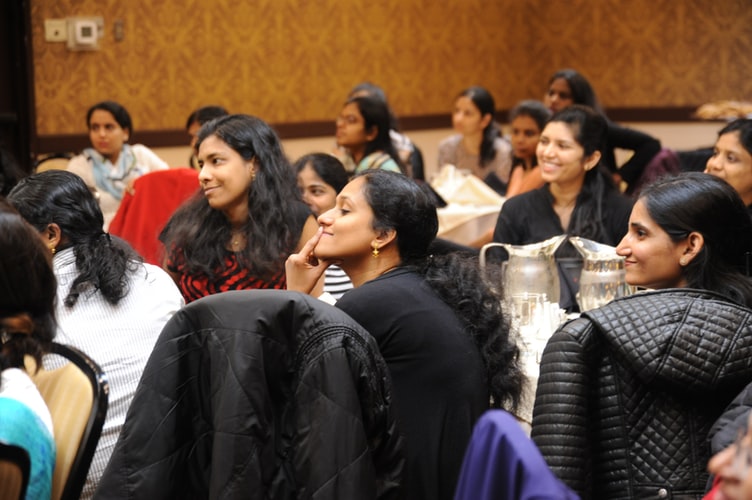
Do you plan your talks for maximum impact on listeners? Here's how to live in your audience's world to speak for success!
Do you ever look at things from your audience's point of view?
Sound like a silly question? It isn't, really. The truth is, giving speeches and presentations can be a can't-see-the-forest-for-the-trees affair. Often, we're so intent on getting important information across that we don't stop to wonder if it is coming across.
We can be so focused on succeeding as a speaker that we miss the opportunity to actually reach people in a way that influences their thoughts, feelings, and actions. To succeed in that way, we sometimes have to change our mindset—from speaker-centric to audience-centric. I call it "living in the world of your audience."
Do you know how to build credibility with listeners and earn their trust? Discover how in my free eBook, "12 Easy Ways to Achieve Presence and Charisma."
Here are three ways you can tap into this unlimited source of power as a public speaker.
Who Are You Speaking to Anyway?

The first step involves knowing exactly who you're speaking to, as closely as you can accomplish that goal. This includes the easy metrics such as demographics, education level, knowledge of topic, and relative interest in the subject.
But the really rich vein here involves considerations like expectations and preferences. How do these people expect to receive the information you're giving them; and equally important, how do they prefer to get it? You might, for instance, be talking to a crowd that loves data and empirical evidence. Or you might learn that another group is interested in hands-on activities that will help them learn.
What you really need to search for is the answer to the question: What turns these people on? What will resonate with them? The moment you understand "where they live," is the moment you give yourself the key to approaching your topic. Why? Because you'll be approaching it from their point of view. What you say will make emotional as well as logical sense to them from the start. They'll readily tune in to that frequency, which is after all the one they prefer.
Want to speak with maximum confidence? Fearless Speaking was just named "One of the 100 Best Confidence Books of All Time." Click image below to get your copy today!
How to Get an Audience Engaged in Your Talk

That idea of an emotional connection is important in getting your audience engaged at the start of your speech—and keeping them that way. It isn't enough to have great content. That's the mistake too many speakers make, because even great material can lose its effectiveness if no one is engaged enough to hear it or receive it.
Adult learning theory tells us that people can pay attention for about 20 minutes before they need some kind of new stimulus. That doesn't mean you have to be a slave to a twenty-minute clock, artificially changing what you're doing at exactly the right time. It does mean you should always be looking for ways to keep audience ears pricked and eyes open. Passively receiving information sent one's way verbally—as too many audiences are forced to do—is ineffective if that's the only thing a speaker offers them.
I tell clients that it's helpful to start thinking about your audience's engagement once you have a rough idea of your content. And the clues you need for doing so are in the audience analysis I discussed above. Once you have a good idea of what interests this audience, you can build in elements—visuals, group discussions, activities, etc.—that engage them along those very lines. And of course, the more you tell a story with your data, the more interesting that content will be.
An Easy Way to Get Listeners on Your Side

From there, it's just a case of making sure you say the things you need to, so you let the audience know this is their world you're all living in. For instance, instead of announcing "Here are what I consider the most important issues in the industry," ask them instead: "What would you say are the most important areas we need to focus on in this industry?"
It's a rhetorical question, and you follow it by delivering the same information you always intended to give. But the minute you asked that question, everyone's mind perked up. Just as important, you've just brought listeners into the speech instead of keeping it as a monologue.
There are lots of ways you can continue to do this throughout your talk: "As you know . . ." "We've all seen this in our industry, haven't we?" "As someone from your department told me earlier today." "I want to share this with you because I think you'll find this information useful."
In all these cases, you're reminding your audience that this talk is all about them—not you. From your awareness of what their needs are, to the engagement you build into your speech, to "touches" like this you offer them throughout, you'll be demonstrating that you're truly living in their world. How would a speaker like that not reach, and potentially move, his or her listeners?
You should follow me on Twitter here.



